|
Quick Links
|

|
|
Join Our List
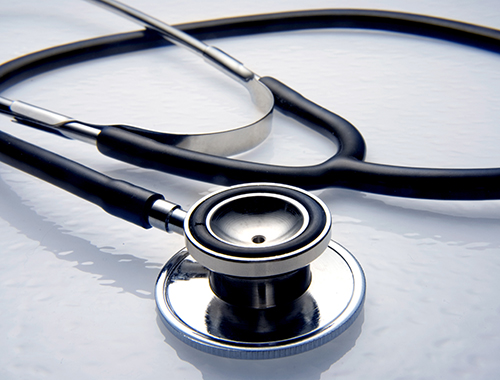
 |
|
FROM THE DOC
|
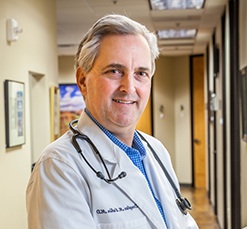 |
'How Do We Thrive...Not Just Survive, In This New Internet Connected World We Are Creating.'
The human touch is something we all need and crave......and it's going to become increasingly hard to come by in the modern world.
Automated phone answering, computer 'bots' helping you on line....technology is increasingly sophisticated and streamlines many activities, but it removes the human from the equation.
In medicine, there is a great deal that computerization can assist with in prescription fulfillment and insurance interactions, but to heal, to cure, we need the human touch....and that cannot be found in our technologies.
That is why we are focused in this office to keep the human touch (phones), but use the computer (email) to augment your experience and to create efficiency.
Email is not a 'sexy' topic in computer circles, but it is the 'killer app'...the best method for using computers to enhance patient care and experience. An email between a doctor and patient who know one another over the years works great; an email between a 'health care provider' and their on-line patient who do not have any personal experience or knowledge of each other, is not able to achieve the same level of authenticity and effectiveness.
We are seeing it in our own world..... computer interactions on screen are becoming increasingly common, but this efficiency is really a poor imitation of the real experience of medical care and caring. The screen interaction will become the norm, while personal connections with medical professionals will become less common.
We will continue to focus on the human touch, combined with a proper dose of computer efficiency, to provide the best medical care anywhere. We'll continue see each other in person, while using our technology to leverage our knowledge of each other to engage over the internet...but it won't be a replacement.
Yours in good health,
- Dr. Lakin
|
|
|
|
VOL 15 / Issue: #2
|
Spring/ 2019
|
Dr. Lakin Named "Top Doc" Again For 2019!. . . . .
|
|
Every year the Phoenix Magazine publishes a guide featuring over 557 of the Valley's best physicians. The doctors are selected through a peer-review survey. The theory is that medical professionals are the best qualified to judge medical professionals.
The survey asks the doctors to nominate those doctors who, in their judgment, are the best in their fields. Once again, Dr. Lakin has been chosen as a TOP DOC among his peers. Please join us in congratulating Dr. Lakin!
|
|
Are Eggs Good For You or Not?
|
Few foods have been as
misunderstood as eggs. It wasn't that long ago that health experts warned people about the potential dangers of eggs because the cholesterol and saturated fat in the yolks were both thought to boost your risk for heart disease. But nutrition is a relatively new science and later research didn't support these concerns. Let's say there's been a lot to unscramble. Here's what you need to know about the healthfulness of eggs, what the labels mean and some easy and delicious ways to enjoy them.
What the science shows
A
study that tracked more than 37,000 adult men and 80,000 adult women for a period of 14 years found that eating an egg a day was unlikely to have an impact on heart disease or stroke. These findings were released back in 1999. Since then, subsequent studies have reached similar conclusions. A
2016 meta-analysis - the type of study that looks at findings from multiple studies to provide a better estimate of risk based on the pooled data - found that there was no clear link between egg consumption and the risk of heart disease, and that eating up to an egg a day may decrease the risk of stroke by about 12 percent. Taken together, the findings from all of the studies over the past 20 years indicate that eggs are healthy.
How many eggs should you eat?
Most experts say it's OK to eat an average of just under one egg per day. That means if you have a three egg omelet twice a week and a fried egg with avocado toast once per week, you're within the range.
Egg whites or whole eggs?
This question comes up because the yolk contains the cholesterol and saturated fat, however, it also happens to be where you'll find most of the nutrients in eggs. Some of the nutrients, like vitamin D and choline, aren't easy to come by in the diet, so eggs are a meaningful source. In fact,
government data suggests that most adults are under-consuming choline, which is a nutrient involved in memory and mood regulation. Eggs are a top source of this essential compound. Egg yolks also contain the antioxidants lutein and zeaxanthin, which support healthy vision.
Interestingly, whole eggs may have an additional advantage over just the whites. In a small
study among young men, researchers looked at the impact of consuming whole eggs or egg whites on their post-workout muscle-building response. Though the protein levels among both groups were equal, the whole eggs led to a 40 percent increase in that muscle-building response, indicating that whole egg eaters would experience better gains in muscle mass compared to those who skip the yolks. It's thought that whole foods in their complete and natural form supply the right mix of nutrients that optimize their benefits - yet another reason to enjoy the yolk.
A large egg has about 70 calories, about 55 of which are supplied by the yolk. While an abundance of nutrients are contained within the yolk, the majority of protein - over 4 grams - is in the low-calorie whites. If you're looking to get all of the nutrients in whole eggs but want a lighter egg-based meal, try combining the whites with some whole eggs. For instance, make an egg salad or scramble using a couple of whole eggs plus additional whites. This not only amplifies the size of your dish, but also pumps up the protein, both of which boost satisfaction.
- By Samantha Cassetty, RD
|
|
Would You Like to be 'Paged' for Your Appointment?
|

We have brought back the option to wait outside the office for your appointment and be 'paged' when it is your time.
Yes, now you have the option to wait outside the office; in the main lobby or even in your car!
When it is time for your appointment, we will page you so you can avoid close contact with any possible environmental infections.
|
|
 |
|
Sarah & Her Little Helper
|
 |
Simply check in at our front desk, then we will give you a pager to keep in touch. It is that easy!
Stay healthy my friends!
|
|
What to Know About Eye Floaters and Flashes. . . . .
|
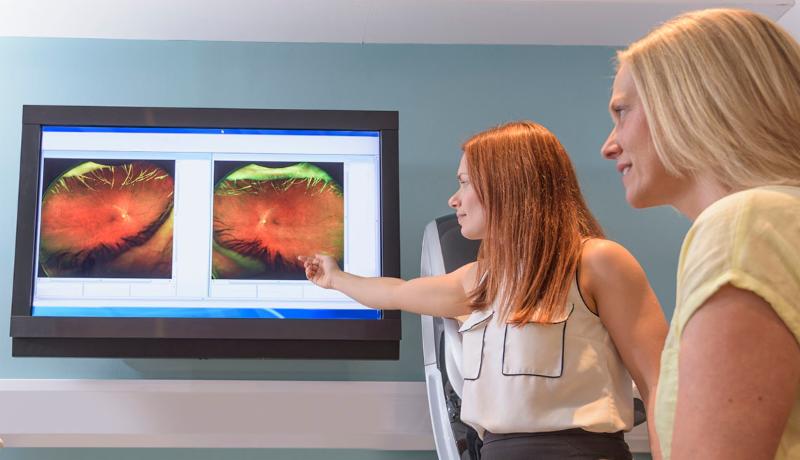
They can be harmless or signal a vision-threatening problem
Almost everyone will experience eye floaters in their lifetime, especially as they get older. They're those tiny spots or lines that look like they're in front of the eye, but they are actually floating inside it. Flashes, which look like streaks of lightning, are more common with age, too. Most of the time, neither floaters nor flashes are cause for worry. But under certain circumstances, they require immediate medical attention. Here's what you need to know to protect your vision.
What they are
Floaters can be disconcerting. "They can appear as rings, whips, sheets, squiggles or other patterns," says Ming Wang, M.D., founding director of Wang Vision 3D Cataract and LASIK Center in Nashville, Tenn. Sometimes they're in the peripheral vision, other times they're at the center, or both.
Floaters tend to move as the eye moves - for example, moving up when the eye moves up and settling downward when the eyes are still. They're easier to see on a uniform background (a white wall or a blue sky), or after doing activities that require frequent and quick side-to-side or up-and-down movements, such as driving or reading.
Flashes are different. Wang describes them as "split-second bright white disturbances in the vision" that people often describe as a lightning bolt. They can look like arcs or small streaks, and come and go very quickly, sometimes just at the corner of the eye. They're more noticeable in the dark, so people may not be aware of them during the day.
Causes
Most of the time, both floaters and flashes are due to
normal age-related changes in the vitreous, the gel structure that fills the back of the eye and keeps the eye round.
When we're young, the vitreous has a gel-like consistency. Later it becomes more liquid, Wang says, and "strands form together and move through the light pathway in front of the retina." These are perceived as floating spots, and many people just learn to live with them.
The occurrence of flashes is related to the interaction of the vitreous with the retina. "At younger ages, the vitreous is fully adhered to the retina," Wang says. "As the vitreous begins to separate from the retina, it can pull on it slightly." This produces the appearance of a flash in the vision - "as you would see from a camera," explains Sean Ianchulev, M.D., professor of ophthalmology at the Icahn School of Medicine at Mount Sinai in New York City. Because the pulling force is quick and fleeting, the flash will last only a split second.
Either floaters or flashes can be signs of a posterior vitreous detachment, in which the vitreous separates from the back of the eye - something relatively common after age 50. "All of a sudden, there will be a ton of new floaters or they're much larger than the individual has ever been used to," says Vivienne Hau, M.D., an ophthalmologist and retina specialist at Kaiser Permanente in Southern California.
It sounds serious but usually isn't a cause for concern: About 85 percent of patients who experience a posterior vitreous detachment never develop complications, Hau says, and "most symptoms subside within three months."
A retinal tear or detachment, on the other hand, is a serious problem. (See below.)
Who's at risk
People who are very nearsighted (myopic) are at higher risk for floaters and flashes: "The eyes of nearsighted people are longer than average," Wang explains. "The vitreous then has to fill a larger space, which makes it more prone to developing the strands and liquid consistency sooner than those with smaller eyes."
And trauma, such as a car accident or a punch in the eye, can cause a posterior vitreous detachment or a tear. Recent eye surgery, such as
cataract surgery, can do the same.
If floater changes are minor or gradual, there is no need to be concerned. But if the changes are drastic - such as a dramatic increase in the number of floaters, the sudden onset of floaters, seeing something that seems like a curtain coming down over your vision, or any other decline in your ability to see - they can be a useful warning sign of a retinal tear or detachment. In this way "floaters are our friends," Ianchulev notes.
What to do next
If you notice these signs, see an eye doctor within 24 hours. If you have trouble getting an immediate appointment with your ophthalmologist, contact a retinal specialist. "They are the most prepared specialists to diagnose and treat these problems and handle cases on an on-call basis," Wang says.
Just be sure you receive a dilated eye exam. "Going for a quick vision check is not enough," Ianchulev says. An ophthalmologist or optometrist can perform this exam. The doctor will place drops in each eye to widen the pupil (the opening in the center of the iris, the colored part of the eye), which allows more light to enter the eye. Then each eye is examined with a magnifying lens that provides a clear view of the back of the eye, including the retina, macula and optic nerve. The doctor will be able to see whether there has been a tear or a detachment. Neither one causes any pain because there are no pain receptors in the eye, so the exam is the only way to detect damage, Hau says. "If you experience pain, there's something on the surface of the eye, not within the eye."
While your eyes are dilated, your vision will be blurry and the effects may last for four to five hours. You should plan to have someone drive you home. And bring sunglasses: Your eyes will be sensitive to light.
Treatment
If you catch a retinal tear early enough, you can have a laser procedure to have it repaired. This can be done in a doctor's office, and you'll go home the same day.
With a retinal detachment, the retina separates from the back wall of the eye, like wallpaper peeling off a wall, according to the American Society of Retina Specialists (ASRS). This is an emergency situation and, if not treated promptly, can cause permanent vision loss. But if you act fast, you can save your sight. According to ASRS, retinal detachment repairs have a 90 percent success rate.
-
by Andrea Barbalich, AARP, March 11, 2019
|
|
Apple Watch May Spot Heart Problem But More Research Needed. . . . . .
|
 A huge study suggests the
Apple Watch can detect a worrisome irregular heartbeat at least sometimes - but experts say more work is needed to tell if using wearable technology to screen for heart problems really helps.
More than 419,000 Apple Watch users signed up for the unusual study, making it the largest ever to explore screening seemingly healthy people for atrial fibrillation, a condition that if untreated eventually can trigger strokes.
Stanford University researchers reported Saturday that the watch didn't panic flocks of people, warning just half a percent of participants - about 2,100 - that they might have a problem.
But even among those flagged, "it's not perfect," cautioned Dr. Richard Kovacs of the American College of Cardiology, who wasn't involved with the study.
People who received an alert were supposed to consult a study doctor via telemedicine and then wear an EKG patch measuring cardiac activity for the next week to determine the watch's accuracy. Some skipped the virtual check-up to consult their own doctors; overall, about 57 percent sought medical attention.
Among those who got EKG monitoring through the study, a third had atrial fibrillation, according to preliminary results being presented at an American College of Cardiology conference in New Orleans.
A-fib tends to come and go, and a week of monitoring might have missed some cases, said Stanford lead researcher Dr. Mintu Turakhia. But if the watch detected another irregular heartbeat while someone was wearing the EKG patch, 84 percent of the time it really was a-fib, he said.
"This study we believe provides very encouraging evidence that a device, the Apple Watch, can be used to detect a-fib and to point out to people when additional monitoring or testing may be needed," said Dr. Lloyd Minor, Stanford's dean of medicine.
Other cardiac experts said the study, which was funded by Apple, suggests screening with wearable technology might be technically feasible eventually, but needs lots more research.
"I would not advise this to the overall general population," said Dr. Valentin Fuster, director of Mount Sinai Heart in New York and a former American Heart Association president, who wasn't involved with the study. Instead, he'd like to see it tested in seniors with risk factors like high blood pressure.
WHAT IS ATRIAL FIBRILLATION?
A-fib occurs when the heart's top chambers, called the atria, get out of sync with the bottom chambers' pumping action. Sometimes patients feel a flutter or a racing heart but many times they're not aware of an episode.
Sometimes the heart gets back into rhythm on its own. Other patients get an electric shock to get back into rhythm, or are prescribed blood thinners to counter the stroke-causing blood clots that untreated a-fib can spur. A-fib causes 130,000 deaths and 750,000 hospitalizations a year in the U.S.
HOW DO DOCTORS CHECK FOR IT?
A-fib is most common in older adults, and other risks include high blood pressure or a family history of arrhythmias. But routine screening isn't recommended for people without symptoms. Studies haven't yet proved that early detection from screening would prevent enough strokes to outweigh risks from unnecessary testing or overtreatment.
HOW DOES THE APPLE WATCH CHECK FOR IT?
A mobile app uses the optical sensor on certain versions of the watch to analyze pulse rate data. If it detects enough variation from beat to beat over a 48-hour period, the user receives a warning of an irregular heart rhythm.
The latest version of the Apple Watch also allows wearers to push a button to take an EKG and share the reading with doctors. Saturday's study didn't include watches with that capability.
DOES THE NEW STUDY SHOW MASS SCREENING IS A GOOD IDEA?
No. The study was designed to tell how the watch compared to a week of standard EKG monitoring - not if the wearer's health improved because the screening uncovered the arrhythmia. To prove if detecting a-fib early lowers risk of stroke would require years of study.
And since the study didn't have a comparison group getting routine EKGs, there's no way to know if the watch missed heartbeat problems, giving a false sense of security, Kovacs said.
The puzzling low numbers of alarms might be because most participants were young or middle-aged, not the seniors who are most at risk for a-fib, he said.
- By Associated Press, MSNBC
Back To Top
|
|
Genetic Testing By Myriad, Available In Our Office Now. . . . .
|
The Myriad Hereditary Cancer test is a 28-gene panel that identifies an elevated risk for eight hereditary cancers:
Genetic screening is now a practical tool that we can use to help in the management of your health and the health of your family. It is recommended by the USPTF (United States Preventive Services Task Force.) This has implications for you, but also for your family, and I think it is worthwhile to consider.
We are at the beginning stages of applying this science in the clinical setting, so it is of limited scope of application. I want to help determine if it can be applied to your particular family history. This questionnaire is meant to do just that.
- Determine if you are at risk for cancers that run in the family
- Determine if genetic testing, at it's current state of development, is applicable to your situation
- Have the testing done to determine the best monitoring strategy, as well as helping guide you and your family in future testing and monitoring.
You will notice that this questionnaire has a specific focus on certain cancers, as that is the state of practical application of current genetic testing.
We are using a 24-gene panel from Myriad labs, the inventors of the BRCA test, which was the first large-scale genetic test validated for breast cancer family history.
For now, only a select group of patients can benefit. In the future, genetic testing will become commonplace and perhaps done routinely for everyone.
Answer the following questions and we will determine if you can benefit from this testing right now.
As for the cost, insurance coverage, and privacy issues related to such testing, this will be answered prior to running the test, so feel free to provide this information to initially see if you can benefit.
The process:
Complete this questionnaire
Submit a specimen of saliva (spit test).....this will be the material that is genetically tested.
Myriad labs will contact you to review cost, insurance, and privacy issues before any testing is performed.
Once completed, you will receive a detailed report and we can review it together to determine the best strategy for monitoring your health on an ongoing basis, as well as having specific advice for monitoring of your family members.
In the future, should additional testing become available that is valid to do, your current information will be used in such an analysis.
** Click HERE for more information and to take the Myriad Genetic test
to see if you are at risk.
If you think you are at risk and would like more information, please contact our office to schedule an appointment with Dr Lakin.
'Knowledge is Power!'
Back To Top
|
Spinach, Strawberries and Kale Top Annual Report On The Most Pesticide-Tainted Produce
|
 If you're going to buy organic, strawberries, spinach, kale, nectarines and apples might be a good place to start.
The report, released today, found nearly 70 percent of U.S. produce is contaminated with pesticides, and more than 225 pesticides or pesticide breakdowns compounds are found on our nation's produce.
There are a broad range of pesticides, and it's still not entirely clear how much residue may harm people.
The U.S. Department of Agriculture, which produces the pesticide data analyzed by EWG, just last December boasted that the U.S. food supply is "among the safest in the world" for pesticide residues.
"More than 99 percent of the samples tested had pesticide residues well below benchmark levels established by the Environmental Protection Agency (EPA)," the agency said in a statement on the most recent round of pesticide testing.
 However, the new EWG analysis is concerning because many pesticides found on our food have been linked to cancer, respiratory problems, depression, endocrine disruption and impacts to people's reproductive systems. Studies increasingly show that these health impacts are linked to exposure at levels below the thresholds set by federal agencies such as the EPA.
In addition, many foods had a mixture of pesticides on them-we know very little about how such chemical cocktails may impact our health.
"We see health impacts when people eat fruits and veggies with the highest pesticide loads, [such as] increased risk of cancer and fertility problems in huge epidemiological studies, this suggests people should limit their consumption of foods with the highest pesticide loads and opt for organic whenever possible," Nneka Leiba, co-author of the report and the director of healthy living science at EWG, told EHN.
The EWG report comes on the heels of a couple major studies that linked heavy pesticide consumption to negative health impacts.
Last fall,
a study of about 70,000 people by French scientists found a 25 percent decrease in overall cancer risk for people who ate high levels of organic food compared to people who ate very little or no organic food.
And about a year ago, i
n a study of 325 women undergoing fertility treatment, scientists reported "higher consumption of high-pesticide residue [fruits and vegetables] was associated with lower probabilities of pregnancy and live birth."
Every year EWG analyzes the most recent USDA data (the agency doesn't test every kind of produce every year) on the most popular fruits and vegetables, which include more than 40,000 samples.
This year's "Dirty Dozen" - starting with the most polluted:
- Strawberries
- Spinach
- Kale
- Nectarines
- Apples
- Grapes
- Peaches
- Cherries
- Pears
- Tomatoes
- Celery
- Potatoes
The list is similar to last year's, which also had strawberries and spinach atop the list.
"Even low levels of pesticide exposure can be harmful to children," Dr. Philip Landrigan, a pediatrician and world renowned epidemiologist, said in a statement.
"When possible, parents and caregivers should take steps to lower children's exposures to pesticides while still feeding them diets rich in healthy fruits and vegetables."
Leiba said, of course, eating fruits and vegetables remains vital to good health, and acknowledged that not everyone can afford or has access to organic foods.
The new report singles out kale as the most surprising finding this year-more than 92 percent of kale samples showed two or more pesticides. Multiple samples of the popular superfood had 18 different pesticides.
About 60 percent of kale samples contained the pesticide Dacthal, which the EPA classifies as a possible human carcinogen, Alexis Temkin, a co-author of the report and toxicologist at EWG, told EHN.
"The last time kale was tested was in 2006 to 2008, and in 2009 kale was 8th on the [EWG Dirty Dozen] list," Temkin said.
Kale and spinach averaged 10 to 80 percent more pesticide residue by weight compared to other crops.
"Before testing, all produce was washed and peeled, just as people would prepare food for themselves, which shows that simple washing does not remove all pesticides," report authors wrote.
Leiba said the USDA doesn't test for the same pesticides every year, which makes it difficult to compare how pesticide use is trending in the U.S.
"We want to emphasize that all the pesticides used on fruits and vegetables aren't being tested for, and those are tested are showing cause for concern," Leiba said.
The report also revealed the fruits and vegetables with the least pesticide residues.
Leiba said this list is helpful for people that cannot get organic versions of the dirty dozen, as it offers healthy produce that consistently tests clean.
Avocados and sweet corn topped that list, with less than 1 percent of samples showing any pesticides.
The entire "Clean Fifteen" list:
- Avocados
- Sweet corn
- Pineapples
- Frozen sweet peas
- Onions
- Papayas
- Eggplants
- Asparagus
- Kiwis
- Cabbages
- Cauliflower
- Cantaloupes
- Broccoli
- Mushrooms
- Honeydew melons
|
|
Ascenda Introduces New Molecular Stool Test That Detects C. Difficile Toxin A and B
|
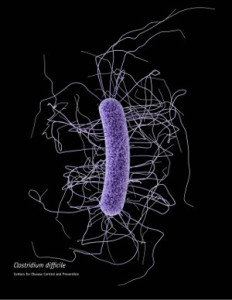
Testing available in our office now!
Ascenda BioSciences is proud to introduce a NEW molecular stool test that detects C. diff toxin A and B (2 separate results). This test is intended for all types of patients with diarrhea, especially those who live in assisted living facilities
Gastrointestinal infections in both pediatric and adult patients account for significant morbidity and mortality worldwide (Schlenker and Surawicz 2009). In developing countries, an estimated two to four billion episodes of infectious diarrhea occur annually (Navaneethan and Giannella 2008). In addition, immunocompromised hosts, including HIV patients, solid-organ transplant recipients or patients requiring therapy for chronic inflammatory diseases are susceptible to gastrointestinal infections (Thom and Forrest 2006). Mild diarrhea can lead to absenteeism from school or work and may require treatment by a health care provider. Patients with severe diarrhea may be hospitalized and some may develop more serious sequelae such as Guillain Barré syndrome and hemolytic uremic syndrome (HUS), and in some cases death (Fischer Walker, Sack et al. 2010). Nearly three percent of neonatal mortality and 17 percent of under-five child mortality is attributable to diarrhea (Patel, Mamtani et al. 2010).
Clostridium difficile is the most common cause of nosocomial infectious diarrhea in developed countries and is the major cause of antibiotic-associated pseudomembranous colitis (Yoo and Lightner 2010; Navaneethan and Giannella 2008).
C. difficile is a Gram-positive anaerobic rod-shaped bacterium belonging to the Clostridiaceae family that causes diarrhea following the production of two toxins, enterotoxin A (the product of the tcdA gene) and cytotoxin B (the product of the tcdB gene) (Yoo and Lightner 2010; Schlenker and Surawicz 2009; Persson, Torpdahl et al. 2008). In the US, the number of hospitalized patients discharged with "intestinal infection due to C. difficile" (as the discharge diagnosis) more than doubled between 2000 and 2009 from approximately 139,000 to 336,000 (CDC, 2012).
Contact us today for more information about how to order the test at our office.
|
|
Oral Manifestations of Systemic Diseases
|
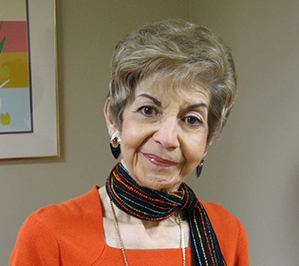
The oral cavity plays a critical role in numerous physiologic processes, including digestion, respiration, and speech. The mouth is frequently involved in conditions that affect the skin, but it is also affected by many systemic diseases. Oral involvement may precede or follow the appearance of indications of disease at other locations.
This article is intended as a general overview of oral conditions which are possibly oral manifestations of some systemic diseases; however, details regarding the diagnosis and management of these oral conditions would be beyond the scope of this overview. The manifestations of additional systemic diseases will be included in future articles.
Careful examination of the oral cavity may reveal findings indicative of an underlying systemic condition and allow early diagnosis and treatment. Examination should include evaluation for any soft tissue changes, periodontal inflammation and bleeding, and the general condition of the teeth.
Identification of oral manifestations of three commonly occurring systemic diseases follow. It is important to understand that the presence of such oral conditions does not conclusively indicate the actual presence of a particular systemic disease. It requires medical follow-up to confirm the presence of a given disease if, in fact, a diagnosis has not already been made. Also, it is important to note that some oral manifestations can be representative of more than just one systemic disease.
Should an oral health care provider recognize conditions that require further investigation, the patient would be informed to do so, along with an explanation of the importance to pursue resolving the problem.
Anemia
Oral conditions in patients may include a relatively pale hue to the soft tissue lining of the mouth, which normally appears more vibrant, healthy, and indicating a good blood supply.
The top surface of the tongue may be smooth, lacking the usual papillary tissues, with a "bald" appearance. This condition, called atrophic glossitis, can also be associated with iron deficiency anemia or Vitamin B complex deficiencies. Patients may complain of burning, pain, or tenderness of the tongue. Also, unlike the pallor of the oral cavity lining, the tongue may appear bright red.
In addition to the above, there may be a candidiasis, an infection by a yeast-like thrush fungus, as a concurrent symptom or an alternative cause of the redness, burning and atrophy symptoms. Candidiasis in some patients may also present as a lip infection causing redness, fissuring, and/or crusting of the corners of the mouth.
Diabetes
There is a strong association between diabetes and periodontal diseases, including gingivitis (gingival inflammation) and periodontitis (inflammation and destruction of the supporting structures of the teeth and supporting bone which holds teeth in place). Notably, there is emerging evidence of a two-way relationship - diabetes can lead to poor periodontal health, and poor periodontal health can make it difficult to control diabetes. Patients with poorly controlled diabetes experience significantly greater periodontal attachment (tooth supportive) loss compared with patients with well-controlled diabetes or those without diabetes. In addition, treatment for periodontitis may improve or even prevent diabetic complications, including nephropathy (kidney disease), stroke, angina (a severe constricting pain related to problematic blood flow to the heart muscle), transient ischemic attack (mild stroke), heart attack, and heart failure. The International Diabetes Federation recommends that primary care for diabetes should include at least annually inquiring about symptoms of gum disease - bleeding when brushing, swollen or reddened gingiva and encouraging regular evaluation and treatment by a dental health professional.
Symptoms may also include, generalized atrophy of the tongue papillae (as described in cases of anemia) in addition to taste dysfunction, salivary gland dysfunction resulting in a dry mouth, burning mouth syndrome, and delayed wound healing.
Gastroesophageal Reflux Disease
Potential oral findings in patients with gastroesophageal reflux disease (GERD) include water brash (periodic increase in salivation), xerostomia (dry mouth), oral burning sensation, halitosis, red and irritated palatal tissue, and dental erosion (enamel worn from the teeth). The erosion pattern with GERD tends to affect the occlusal (chewing) surfaces of the lower molars and the back surfaces of the upper front teeth. Affected teeth exhibit worn, dull enamel; they may appear yellow and become sensitive to temperature changes as the underlying dentin becomes exposed as the surface enamel is worn away. Dental erosion is irreversible and may require dental restorative treatment depending on severity; other oral findings usually will resolve with medical management of the gastroesophageal reflex disease.
The oral health articles that will appear in future newsletter editions will include oral manifestations of nutritional/vitamin deficiencies or toxicities, hematological (blood) disorders, pulmonary diseases, gastrointestinal diseases, etc.
It has been demonstrated, and numerous studies have shown, that the status of one's oral health can have an overwhelming effect on general health and disease prevention or management. Therefore, for total health maintenance and benefits, regular visits to your oral healthcare provider are strongly advised.
Here's to your good health.
Marie C. Jacobs, D.D.S.
Professor Emerita Loyola University Chicago
|
DR. LAKIN'S NEW SECURE PATIENT PORTAL
'MyHealthRecord.com'
|
Dr. Lakin and staff are very excited to announce we have upgraded our secure patient portal!
We changed vendors, and our new secure portal,
MyHealthRecord.com, is easier to use and easier for us to respond to your requests.
At your convenience
- View your health record from any Internet-enabled device
- Exchange secure messages with Dr. Lakin or our staff
- Request and manage appointments
Anytime access
- Lab orders
- Test results
- Upcoming appointments
- New Document and articles from Dr Lakin

To access our new patient portal, MyHealthRecord.com, you are required to complete a short questionnaire. This is a very simple process.... quick and easy. If you need assistance, we are always here to help.
Call us for your invitation email!
It will give you all the information you need to use our secure portal, MyHealthRecord.com, for your medical care!
Back To Top
|
|
TOM'S TRAVELS:
Montevideo: A Friendlier Version of Buenos Aires. . . . .
|

 About five times when traveling worldwide I ran into South Americans from Montevideo, Uruguay. And when I indicated my love for neighboring Buenos Aires they said I must come and see their city. So I promised them and we executed a trip of ten days there several Februaries ago (the summer season there) and could not have been happier we took their advice. An example of their friendliness was when we were having difficulty finding a museum in the Old City and a young couple offered help and drove us there as the numbering posed a challenge. About five times when traveling worldwide I ran into South Americans from Montevideo, Uruguay. And when I indicated my love for neighboring Buenos Aires they said I must come and see their city. So I promised them and we executed a trip of ten days there several Februaries ago (the summer season there) and could not have been happier we took their advice. An example of their friendliness was when we were having difficulty finding a museum in the Old City and a young couple offered help and drove us there as the numbering posed a challenge.
 Just as in Argentina the tango and beef cattle play dominant roles in the culture. The classic skyscraper symbol of the city, Palacio Salvo, plays on loud speaker each noon the tango melody you would all recognize called La Cumparsita. Tango and folk dancing shows are offered for tourists as well as many choices for eating grilled meats you watch being cooked. Although born in seedy neighborhoods the tango has progressed to dancing in evening dress attire.The season before lent there is marked by weeks of celebrating Carnaval all over the city with magnificent lighting and the drumming of the candombre ritual having origin in Africa. Regarding dancing we actually witnessed many seniors in the city center dancing the tango on sidewalks to the music from a boom box.
Just as in Argentina the tango and beef cattle play dominant roles in the culture. The classic skyscraper symbol of the city, Palacio Salvo, plays on loud speaker each noon the tango melody you would all recognize called La Cumparsita. Tango and folk dancing shows are offered for tourists as well as many choices for eating grilled meats you watch being cooked. Although born in seedy neighborhoods the tango has progressed to dancing in evening dress attire.The season before lent there is marked by weeks of celebrating Carnaval all over the city with magnificent lighting and the drumming of the candombre ritual having origin in Africa. Regarding dancing we actually witnessed many seniors in the city center dancing the tango on sidewalks to the music from a boom box. 
As elsewhere in South America the drinking of yerba mate tea out of special containers with metal straws is seen everywhere. Some men carry a sling with thermos of hot water to refresh the liquid slowly sipped using the tea leaves over and over. I tried my best to appreciate this grassy tea but could not develop a taste. We visited a museum devoted to the gaucho culture witnessing all the trappings of gaucho "cowboys" including metal balls on leather laces used both in fighting enemies and corralling cattle. A day trip was also taken where we visited a small town founded by Swiss dairy farmers who to this day produce milk for Uruguay. Even the streets there bore Swiss names such as Avenida Interlaken. 
 Few Americans visit Montevideo as tourists so we often got questioned about why we chose to come there. Montevideo is easily reached taking a direct flight from Miami. Few Americans visit Montevideo as tourists so we often got questioned about why we chose to come there. Montevideo is easily reached taking a direct flight from Miami.
Needless to say we stood out as Americans so we just smiled while strolling in response to people politely talking about us. Toward the end of our ten days as I was passing a cafe near our hotel a man yelled out, "Hey American!" Since he looked safe I approached his table and joined their conversation (in English) as he had spent several years as a child in New York City where his military father was stationed. But before leaving I asked how he knew I was American and his answer was "because you have the look of optimism in your eyes"---not a bad way to be branded if you're an American!
I would be happy to share travel info with you at my email:
|
|
Rx Prior Auth News From Jeff
|

Win, Place or Show could mean "Yes, Maybe or No"
 Undertaking a prior-authorization (PA) to seek approval for a prescription medication seems sometimes like a game of "chance." It is a dynamic and changing process where the odds of an approval are always uncertain but an often time-consuming and circuitous process is to be expected and seldom otherwise.
When we receive a prior authorization request in our office, either electronically or by fax, it's because a patient's health insurance or drug plan has rejected a new prescription fill or re-fill. The denial requires your prescriber to vouch for and defend his/her therapy of choice for you or else change to a drug acceptable by and within your Plan's established drug formulary.
A health plan's drug formulary list is the main driver for acceptance or denial of payment. Initially, a determination may be issued by your Plan's software program - it automatically checks a prescription request against the formulary in its data banks and renders a decision - no humans required. However, the computer will notify you of the rejection, either at the pharmacy window or by letter or mail and your prescriber may receive a fax or call. Further action, or an appeal, is when a live person(s) take over.
Some common reasons for a yes, maybe or no determination are as follows:
- Yes: A 'win' for you. Why "yes": because the prescribed drug is "formulary." Is it of proven "medical necessity" based on the FDA-regulated diagnosis/treatment compendium. You have had a history of success using a certain drug and no recognized benefit switching to another. Changing you from a current medication to another alternative might actually be harmful or dangerous, and staying the course seems safer and more cost-effective for you and your Plan.
- Maybe: A 'place' for you. This means you are still in contention but your Plan wants more data and proof for requesting a certain medication. Some considerations: has a patient tried/failed other medications or had negligible results with other drugs? Has the patient documented proof of 'step-therapy' (using cheaper formulary or generic choices)? If the prescriber attests to try/fail with one of more of the Plan's alternatives, the chosen drug might then be allowed.
- No: There is no 'show' in pharmacy. You either get a drug covered or not, or accept your Plan's alternative or pay out-of-pocket cash for it. Plans' believe their formulary includes other medications and therapies well-suited* to address their member's medical needs and conditions. Work with your doctor to obtain a drug deemed "therapeutically equivalent."
Much
like betting on the horses, whether or not your drug PA survives your insurer's scrutiny and makes it to the finish line is a gamble. Your ultimate choice of medications depend on the deals, agreements and contracts your drug plan has with various drug manufacturers, PBMs, distributors, etc. Your drug can be "scratched" off a formulary at any time depending on the deals they make. Sometimes it's clear why but other times not so much, it's either good out of the gate or a nothing but a long shot.
A denied drug may be available for an "appeal" but that decision is also at your plan's prerogative. It may be disallowed 'across the boards,' sometimes tier or quantity exceptions or even an appeal are not allowed. An increase in quantity may be off limits. You may be out of the running for a more favorable or lower price, aka a "tier exception." Your plan details all this in their drug formulary documents, bu the way, but you may have to rad the fine print to drill down to their details.
We will work with you and your insurance to obtain the best for coverage of medications we prescribe. We guarantee our work but the final decision rests with your insurance plan and their formulary list, coverage and pricing policies. Win, place or show.... we never really know.
*well-suited usually means formulary, of lower cost, lower-tier and generic choice.
|
|
Note From Our Biller: Medicare Plans
|
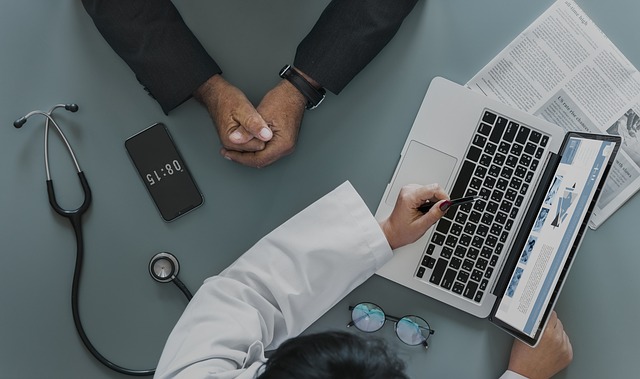
Medicare Advantage
is an insurance network that replaces traditional Medicare.
Medicare Advantage will typically act as a primary, secondary and sometimes prescription insurance. The advantage to the patient is often lower monthly premiums with inclusive benefits. Medicare Advantage Plans are offered through many companies, each patient on a Medicare Advantage Plan is subject to the plan guidelines which includes provider networks.
There are generally two types of Medicare Advantage Plans.
- A PPO (Preferred Provider Organization) is a second type of managed care health plan that provides the most benefits if care is received from an in-network provider. Like an HMO plan, PPO plans also have a network of doctors and hospitals you can visit. PPO networks can be broader than HMO networks, networks were created as a form of cost control for the insurance company while giving patients more options than a typical HMO. With additional flexibility there is a cost; premiums, deductibles, co-insurance or co-pays will generally be higher and patients are usually responsible for paying the full cost of out of network services until the plan deductible is met. It is not uncommon for a PPO plan to have an in network and an out of network deductible that accumulate independently of each other. PPO plans do not require patients to select a PCP like most HMO plans do. With a PPO plan you can see any doctor or specialist without seeing your PCP first for a referral. Additionally, coverage is usually available even when using an out of network provider though costs tend to be higher with a much lower reimbursement rate. Out of network providers usually require payment in full on the day services are provided and do not normally accept insurance discounts.
- An HMO (Health Maintenance Organization) is a managed care health insurance plan. HMOs typically cost less to have but utilize a more restrictive provider network where patients must coordinate all medical care through an assigned PCP (Primary Care Physician). HMOs try to reduce their costs for your medical care by limiting patients to a pre-determined network of doctors and hospitals. Most HMO plans require patients to choose a PCP and your assigned provider will be your point of contact for all your healthcare needs. In most cases a PCP referral is required for lab tests, x-rays, or specialist visits. In many cases, you may need to be pre-approved before receiving said services. Except in emergent situations, your assigned PCP is usually the only provider who can approve specialized services. This method allows the HMO system to keep their costs down by ensuring specialized care is medically necessary.
Insurance premiums, patient benefits and provider payments have been heavily debated in recent years. There are many insurance companies offering coverage along with many types of coverage to choose from. All patients are welcome to inquire about the practice however there are instances when insurance factors do not make for a good fit. Dr. Lakin has made it his mission to care for each individual patient using every resource he has available. Insurance networks can be restrictive and can limit the type of medical care he is able to provide. This scenario has made him very mindful of the types of insurance he does and does not partner with.
Dr. Lakin continues to contract only with Original Medicare (no Medicare Advantage) as he feels it is the least restrictive option that allows him to provide care that is in the best interest of the patient. Technically speaking Dr. Lakin is able to provide care to a patient enrolled in an HMO on a cash pay basis however this arrangement is not encouraged. Complications do occur when a patient on an HMO plan chooses to go outside of their insurance and use a non-network primary care physician. HMO plans do not honor non-network medical recommendations for specialist referrals, medications, and frequently will deny payment for lab or x-ray orders as all these types of services must be coordinated through the patient's in-network primary care physician.
Dr. Lakin is very aware that each person must choose their health insurance coverage with many variables in mind; financial, health related, employer sponsored or Market Place options to name a few.
In the end, Dr. Lakin and our office is committed to providing the best care possible for each patient taking all factors into consideration.
If you need more information on Medicare plans, please contact Veronica.
|
|
Doctor's Visits:
Why Checkups Are Vital. . . . . .
|

Annual Physicals 101:
When you were little, your parents probably made sure you had an annual checkup with your doctor. But as you've grown older, you may have gotten out of this habit.
Health professionals stress that these regular exams are important to help identify risk factors and problems before they become serious. If diseases are caught early, treatments are usually much more effective. Ultimately, having a regular doctor's visit will help you live a long and
healthy life.
It is also very important for you to play an active role to get the most out of your doctor's visit. Before your exam, review and update your family health history, be prepared to ask if you're due for any general screenings or vaccinations, and come up with a list of questions if you have particular health concerns.
During your actual doctor's visit, don't be shy about getting your questions answered. Also, if the doctor gives you advice about specific health issues, don't hesitate to take notes. Time is often limited during these exams, but by coming prepared you're sure to get the most out of your checkup.
Have you scheduled your physical for 2019 yet?
|
Ricotta Dumplings with Asparagus and Green Garlic
|
Ingredients
Dumplings
-
2 cups whole-milk ricotta
-
1 cup finely grated Grana Padano, plus more (for serving)
-
1 large egg, room temperature
-
1 egg yolk, room temperature
-
2¼ teaspoons kosher salt, plus more
-
¼ cup all-purpose flour, plus more
-
8 ounces asparagus, trimmed, cut into 1-inch pieces
-
2 cups chicken stock or low-sodium chicken broth
-
1 green garlic stalk, pale green and white parts, thinly sliced crosswise
-
3 tablespoons unsalted butter, cut into pieces
-
2 tablespoons chopped chives
-
2 teaspoons fresh lemon juice
Recipe Preparation
Dumplings
-
Check the wetness of the ricotta before preparing dumplings. If the ricotta is sold in an individual drained basket, then all you need to do is pat dry and adjust the quantity to 1½ cups. For ricotta that's not drained, you'll need to press it to drain any excess liquid. Line a colander with cheesecloth and set inside a large bowl (to catch the liquid draining from the ricotta). Spoon ricotta onto cheesecloth and put a paper towel on top. Weigh ricotta down using cans or other heavy pantry items; chill for at least 4 hours and up to 24. The ricotta should be dry and crumbly. Measure out 1½ cups.
-
Pulse ricotta, Grana Padano, egg, egg yolk, and salt in a food processor just until smooth. Sprinkle flour over ricotta mixture and pulse again until just combined. Transfer dumpling batter to a medium bowl.
- Dust a parchment-lined rimmed baking sheet generously with flour. Using a metal spoon, scoop out 2-3 tsp. dumpling batter and scrape spoon against side of bowl at a 45° angle to smooth batter. Using your finger tip, push batter off spoon and let drop onto baking sheet (this may take a few tries). The dumpling will slightly curve at each ends. Dust tops with more flour. (You should have about 65 dumplings.)
Sparagus and Assembly
- Bring a large pot of lightly salted water to a boil. Add asparagus and cook until almost tender, 2-3 minutes. Transfer to a bowl of ice water; drain and pat dry. Reserve pot.
-
Meanwhile, bring chicken stock to a simmer in a large skillet over medium heat.
-
Return pot of water to a gentle simmer and add dumplings (one by one so they don't crush each other), stirring occasionally, until they're almost double in size and cooked through and tender, about 4 minutes (dumplings will quickly float to surface).
-
Transfer dumplings to pan; add butter and green garlic. Cook, tossing often, until sauce has thickened and garlic has slightly softened, about 3 minutes. Add asparagus, chives, and lemon juice and toss to warm asparagus; season with salt and pepper. Serve dumplings with more cheese and drizzle with olive oil.
- Do Ahead: Dumplings can be formed 1 month ahead. Freeze on baking sheet, then transfer to resealable plastic bag once frozen. Cook from frozen about 6 minutes.
- Recipe by
Andy Baraghani, bon appetit
|
|
Insights By Steve: Check it Out!
|
 |
|
 |
Insight By Steve (Author)
|
"Five Foods That Fight Sunburn"
.... and more news you can use!
Back To Top
|
|
We Need Your Help!
|
 Keeping you on your correct medication is as important to us as it is to you. With your help, we can be more efficient and be sure you are getting your refill requests on time and to your correct pharmacy. Keeping you on your correct medication is as important to us as it is to you. With your help, we can be more efficient and be sure you are getting your refill requests on time and to your correct pharmacy.
Tips:
1. If you need a refill, be sure to call your pharmacy FIRST, not our office. They will know if you have more refills, and if not, they will call/fax/electronically message us with your request. Then we will contact you if there is a question or concern.
2. Remember to call your pharmacy in plenty of time so you do not run out of your medications. Sometimes we need up to 48 hours to complete a request and we do not want this to be a hardship for you.
3. Register and use our SECURE PATIENT PORTAL for refill requests. We monitor this continually and again will contact you if there is a problem.
4. Remember we do not refill pain or routine medications on Fridays or weekends and all pain medications must be picked up at our office. We cannot mail or any medications outside our office. Please plan ahead and make arrangements!
We are always here to help you and appreciate the opportunity to care for your healthcare needs!
Yours in good health,
Dr. Lakin & Staff
|
|
|
Have a Safe & Healthy
Spring!
Dr. Douglas Lakin & Staff
Paradise Valley Medical Clinic PC
|
|
|